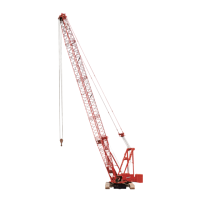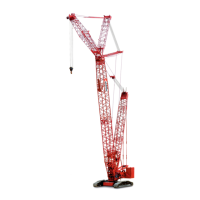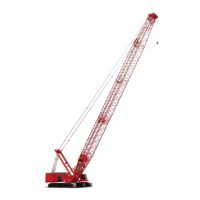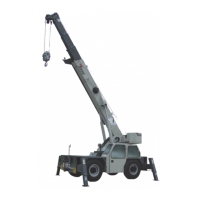SETUP AND INSTALLATION 999 LUFFING JIB OPERATOR MANUAL
4-30
Published 05-15-17, Control # 043-09
ASSEMBLE-IN-AIR RAISING PROCEDURE
This section contains raising and lowering instructions for
#82 boom, #149 luffing jib, and #134 fixed jib combinations
that require use of the Assemble-In-Air Raising Procedure
(see Jib Luffing Assembly, Assemble-In-Air Drawing
A01426).
Extreme care must be used when raising and lowering boom
and jib combinations that require use of the Assemble-In-Air
Raising Procedure. The luffing jib attachment must be raised
and lowered by experienced personnel trained in the
operation and erection of construction cranes.
Personnel shall read, understand, and comply with the
instructions in this section.
Contact the Manitowoc Crane Care Lattice Team for
explanation of any procedure not fully understood.
The area in which the crane is assembled and the
attachment raised and lowered must be firm, level to within 1
ft in 100 ft (0,3 m in 30 m), and free of ground and overhead
obstructions. The area selected must be large enough to
accommodate the crane with selected boom-luffing jib length
and movement of the assist crane.
Danger Tag
A Danger Tag must be attached in the 999 operator’s cab in
clear view of the operator as a reminder that boom-luffing jib
combination in use requires assist crane for raising and
lowering.
Signal Person
Two operators are required to raise and lower the luffing jib
with the Assemble-In-Air Raising Procedure — one to
operate the 999 crane and one to operate the assist crane. A
qualified signal person shall be provided to coordinate the
raising and lowering procedure and to provide necessary
signals (visual and audible) to both crane operators.
Counterweight Requirement
For operation with boom-luffing jib combinations requiring
the Assemble-In-Air Raising Procedure, the 999 must be
equipped with Series 3 counterweight as specified in Luffing
Jib Capacity Chart and Jib Luffing Assembly, Assemble-In-
Air Drawing.
Outrigger
To prevent tipping or structural damage, all boom-luffing jib
combinations requiring the Assemble-In-Air Raising
Procedure must be raised or lowered over side of crane
with outrigger assembly installed and jack pads
extended firmly against foundation.
DANGER
Read Instructions!
To prevent tipping or structural failure of boom and luffing
jib:
• Read Luffing Jib Capacity Charts and instructions
before attempting to raise or lower luffing jib
attachment.
• Rig and operate crane as instructed in Luffing Jib
Capacity Charts, and Jib Luffing Assembly,
Assemble-In-Air Drawing.
Death or serious injury to personnel can result if
instructions are not followed.
DANGER
Falling Attachment Hazard!
To raise and lower luffing jib attachment in use, an assist
crane must be used to partially assemble and
disassemble luffing jib in air.
Read and comply with Jib Luffing Assembly and Jib
Luffing Assembly, Assemble-In-Air Drawing before
attempting to raise or lower this attachment.
Structural damage to crane will occur and boom and
luffing jib will collapse if instructions are not followed.
WARNING
Tipping Hazard!
Do not operate crane until Series 3 counterweight is
installed. Crane will tip if not equipped with proper
counterweight.
WARNING
Tipping Hazard/Structural Damage!
Do not raise or lower boom and luffing jib from or to
ground until outrigger assembly is installed and fully set.
Crane could tip or fail structurally.
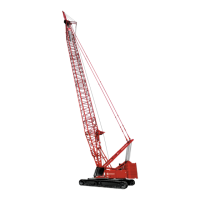
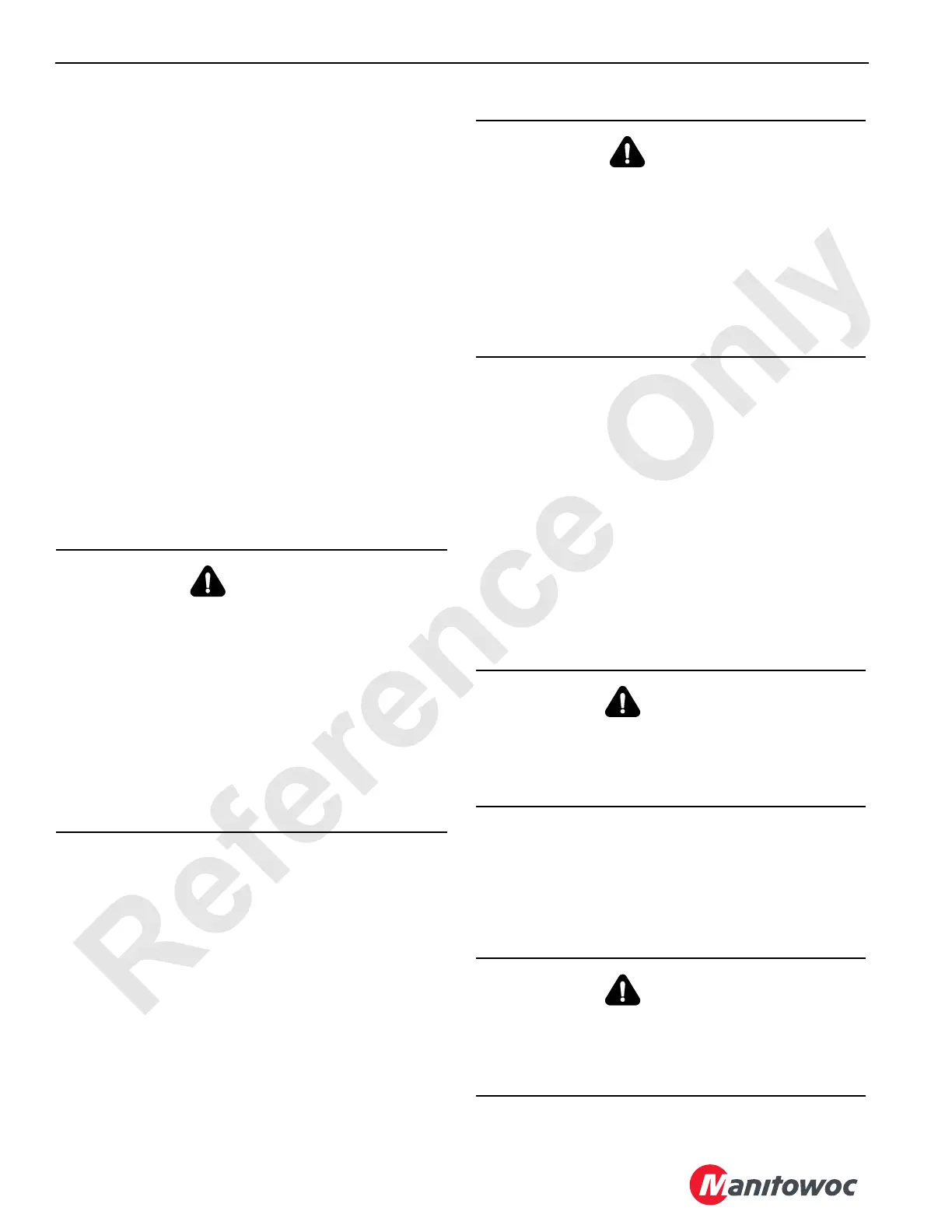